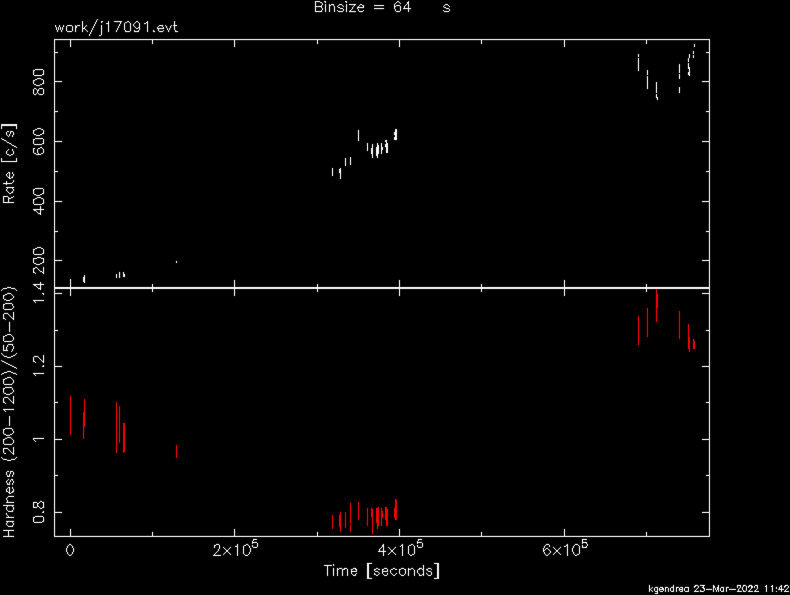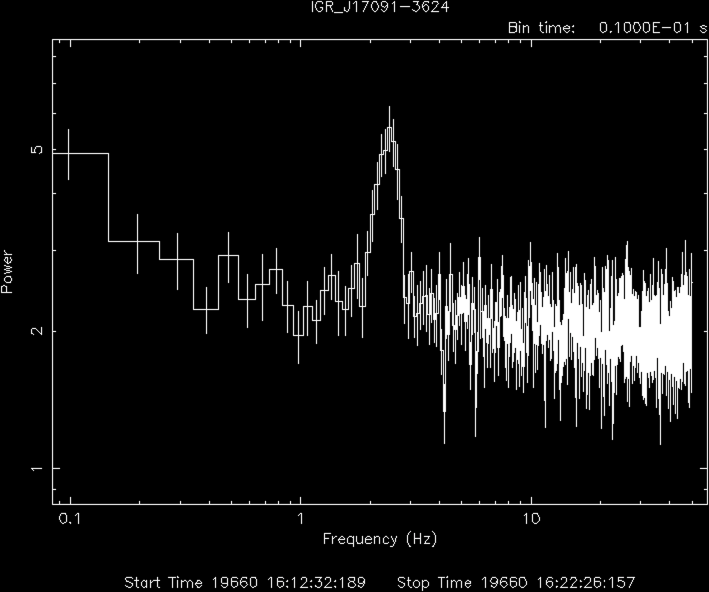NICER / ISS Science Nugget
for March 24, 2022
Anticipating an X-ray heartbeat
A binary star system containing a candidate black hole, IGR J17091-3642 was discovered by the European INTEGRAL observatory in 2003, and subsequently detected by multiple telescopes during outbursts in 2007, 2011, and 2016; for the first time since NICER's launch, IGR J17091 is once again in outburst. This system is of interest because it is a rare "microquasar," producing X-ray emission from a disk of hot matter flowing from the companion star and swirling around the black hole, as well as radio emission from jets of high-energy particles launched perpendicularly to the disk. One of the best-studied microquasars, GRS 1915+105, exhibits poorly understood "heartbeat modes" in the time-variability of its X-ray emission - regular brightness variations that follow reliably repeating patterns reminiscent of electrocardiogram traces. In a single observation with NASA's NuSTAR telescope in 2016, IGR J17091 was also found to exhibit a heartbeat brightness fluctuation with a roughly 50-sec period. Similar to behavior seen in other black-hole and neutron-star accreting systems, IGR J17091 also varies on much shorter timescales (fractions of a second), in a phenomenon known as quasi-periodic oscillations (QPOs); thought to be related to details of the accretion flow, or potentially a precession "wobble" of the disk, the origin of QPOs remains mysterious. The strength of the 2.3 Hz QPO from IGR J17091, coupled with NICER's unique sensitivity to low-energy X-rays, should enable new analyses to test models of both QPO and heartbeat emissions.
NICER reported the new outburst of IGR J17091 and a preliminary assessment of its evolution in two Astronomer's Telegrams, ATel #15282 by Jon Miller (U. of Michigan) et al. and ATel #15287 by Jingyi Wang (MIT) et al.


Figure: Left: The start of the 2022 outburst of IGR J17091-3642 as seen by NICER over the 8-day period ending 3/23/22. The top panel shows the rate of photon detections, while the lower panel offers a simplified representation of the energy content of those photons: the "hardness" ratio of high-energy to low-energy counts. The emission is seen to gradually soften (low-energy photons dominate) in the first half of the week, but then to harden in the second half. Right: The power-spectral density - representing the strength of variability at different modulation frequencies - in a single NICER observation of IGR J17091. The peak near 2.3 Hz corresponds to a strong quasi-periodic oscillation (QPO)
<< Previous
Main Index
Next >>